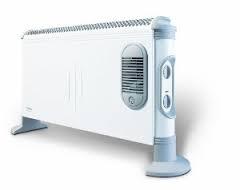My mother is looking to buy a convector heater with thermostatic control for very occasional winter use of a small conservatory. So asked me for advice regarding which model would be the cheapest to run. I told her there would be no difference as electric heaters were all 100% efficient, in that a 3 Kw heater from any manufacturer would consume 3 Kw of electricity and produce 3 Kw of heat. She understood, and I left it at that.
Today she called me and said that I am wrong, based on a statement on Dimplex website in reference to their Cadiz ECO model. Which states that this model uses micathermic heating technology to give a 30% energy saving (based on a lab test heating a room 10 degrees C to 22 degrees C)
The web page can be found here
Based on this, mum believes Dimplex have developed a heater that emits 3000 kW of heat and yet will only consume 2100 kW of electricity, or more importantly to her, that she will pay 30% less using a 3 kW Cadiz ECO, to heat her conservatory than if she used a heater of the same rating, but made by another manufacturer. This sounds impossible to me (heat pumps excepted of course) so can anyone tell me what's going on here? and what are they actually saying?
Today she called me and said that I am wrong, based on a statement on Dimplex website in reference to their Cadiz ECO model. Which states that this model uses micathermic heating technology to give a 30% energy saving (based on a lab test heating a room 10 degrees C to 22 degrees C)
The web page can be found here
Based on this, mum believes Dimplex have developed a heater that emits 3000 kW of heat and yet will only consume 2100 kW of electricity, or more importantly to her, that she will pay 30% less using a 3 kW Cadiz ECO, to heat her conservatory than if she used a heater of the same rating, but made by another manufacturer. This sounds impossible to me (heat pumps excepted of course) so can anyone tell me what's going on here? and what are they actually saying?


